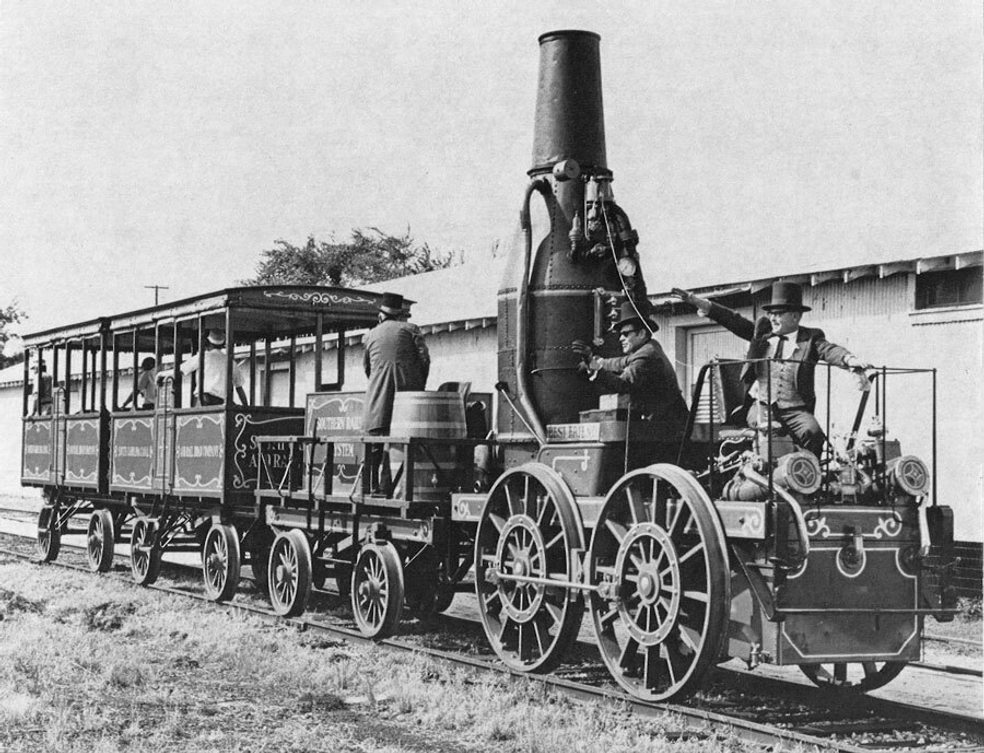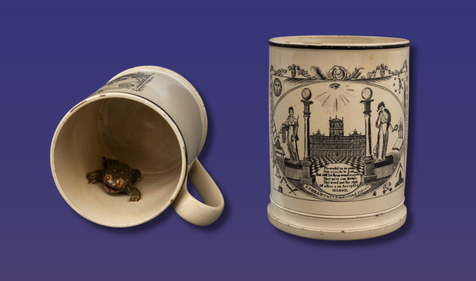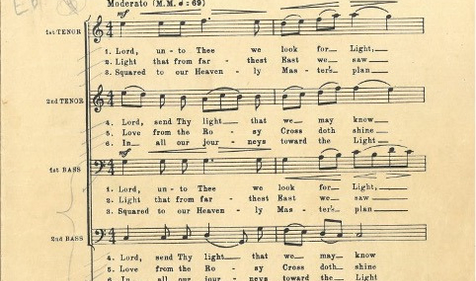In the early 1800s, the Sovereign Grand Commanders of each Scottish Rite jurisdiction communicated about the groundbreaking locomotive, Charleston’s Best Friend.
This article was originally published on the Scottish Rite Masonic Museum & Library’s blog on June 8, 2021.
The Scottish Rite Masonic Museum & Library’s collection of correspondence from Moses Holbrook (1783-1844) to John James Joseph Gourgas (1777-1865) provides researchers with a wealth of insight into early nineteenth-century American Freemasonry, as well as an intimate look at daily life in Charleston, South Carolina, as seen through Holbrook’s eyes.
During the 1820s and 1830s, Holbrook, the Southern Jurisdiction’s fourth Sovereign Grand Commander, corresponded with the Northern Masonic Jurisdiction’s John James Joseph Gourgas. Gourgas served as the NMJ’s Grand Secretary General from its founding in 1813 until 1832, and then as Sovereign Grand Commander from 1832 until 1851. Holbrook served as Sovereign Grand Commander of the Southern Jurisdiction’s Supreme Council from 1826 until 1844.
Holbrook’s letters touch upon a variety of subjects, from outbreaks of yellow fever to the political victory of Andrew Jackson (1767-1845) in the presidential election of 1828. However, one passage, in particular, stands out for its contribution to our understanding of transportation history: a passage in Holbrook’s January 1, 1831, letter to Gourgas regarding Charleston’s Best Friend, the first American-built passenger steam locomotive. Holbrook writes,
The only subject of public attention that occupies us at present Is the Rail Road and “Charleston’s Best Friend” (the name given to a little locomotive engine of six horsepower that has been built for an experiment and put upon the small portion – about five miles or a little over – of the Rail Road which has been completed for the purpose of trial.)
The “Best Friend” when on the trial by the Rail Road Company’s Committee to ascertain whether the machinery - &c–- answered the contract which Mr. Miller the inventor had entered into. The “Best Friend” dragged after it near ten tons besides itself and the wood and water necessary – at the rate of about 15 miles an hour with perfect ease and safety. Several pleasure cars are now attached to it, and it runs at stated periods of the day to carry passengers only – and Bachelors, Maids, Matrons & Madams all are anxious to make trial of a ride at the speed of about 20 miles an hour.
I tried it the other day and went the five miles and back again in thirty minutes and this time included the turning about taking in water &c.
I remain respectfully your friend and well-wisher,
M. Holbrook

The History Behind America’s First Passenger Train
Built at the West Point Foundry in New York in 1830, Charleston’s Best Friend was hailed by the Charleston Courier as an experience that “annihilate[ed] time and space,” a technological achievement that demonstrated the potential of steam-powered rail travel.
Until this time, travel was limited by road conditions, the weather, and river navigability. After the short, but great, success of Charleston’s Best Friend, which was destroyed by operator error six months after its maiden voyage, six new locomotives were constructed for the Southern Railway System, including the Phoenix, which was constructed from the remains of Charleston’s Best Friend.
The short life of Charleston’s Best Friend completely revolutionized America’s transportation system, and towns across the country shifted their sights from building canals to building railroads.
Sovereign Grand Commander Holbrook’s Expedition on Charleston’s Best Friend
As for Sovereign Grand Commander Holbrook, ravaged by several illnesses, worn thin by the incessant battles with Anti-Masonry and the “lukewarmness” of those within the fraternity, William L. Fox in the Lodge of the Double-Headed Eagle reported Holbrook longed to leave Charleston and relinquish his responsibilities as Sovereign Grand Commander. When the United States Government offered settlers to Florida 160 acres of free land on condition they defend it against the Seminoles, Holbrook applied for and received a plot of land under the auspices of the Armed Occupation Act on April 16, 1843, and settled in St. Lucie, Florida.
Remembered as a recluse by the settlers, Holbrook lived in his one-room, palm-thatched cabin stuffed with hundreds of books brought from Charleston and served as the settlement’s only doctor. His “many misfortunes over the years” had robbed him of his “once brilliant intellect,” another settler William Henry Peck (1830-1892) remarked in one of his articles for the Florida Star regarding the Indian River settlement. His only solace was his books and a flute “on which he became a virtuoso.”

On September 11, 1844, Moses Holbrook died and was buried near his cabin on the bluff overlooking the Indian River. He was 61 years old.
Related Stories
Discover additional Scottish Rite blogs and news on this topic.



